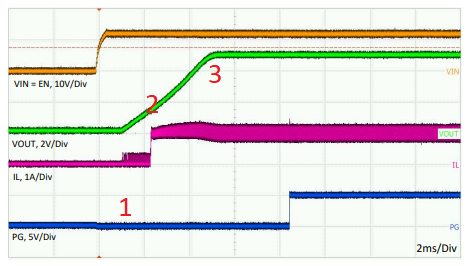Other Parts Discussed in Thread: LMR33620, , LMR33640
I have seen in other posts the datasheet does not include current limit information, but it is the same as LMR33620. However, I have a doubt about this. Could you help me understand?
If they have the same current limit behavior, then their current at startup should limit at the same level, but that is not what is shown on the screenshots in the datasheets.
For example, in the LMR33620 datasheet, looking at Figure 8-4, the startup current through the inductor seems to peak at ~2.5A, and bottom out at roughly 1.5A, centered around 2A. In the LMR33610 datasheet, looking at Figure 10, the startup current through the inductor seems to peak at ~1.4A, and bottom out at roughly 0.6A, centered around 1A. However, it is my understanding that if this part has the same current limit characteristics of LMR33620, then this start-up current would be higher? I understand their is a soft-start function, but that seems to be separate? What am I missing? How can both of these parts have the same current limit specifications?



